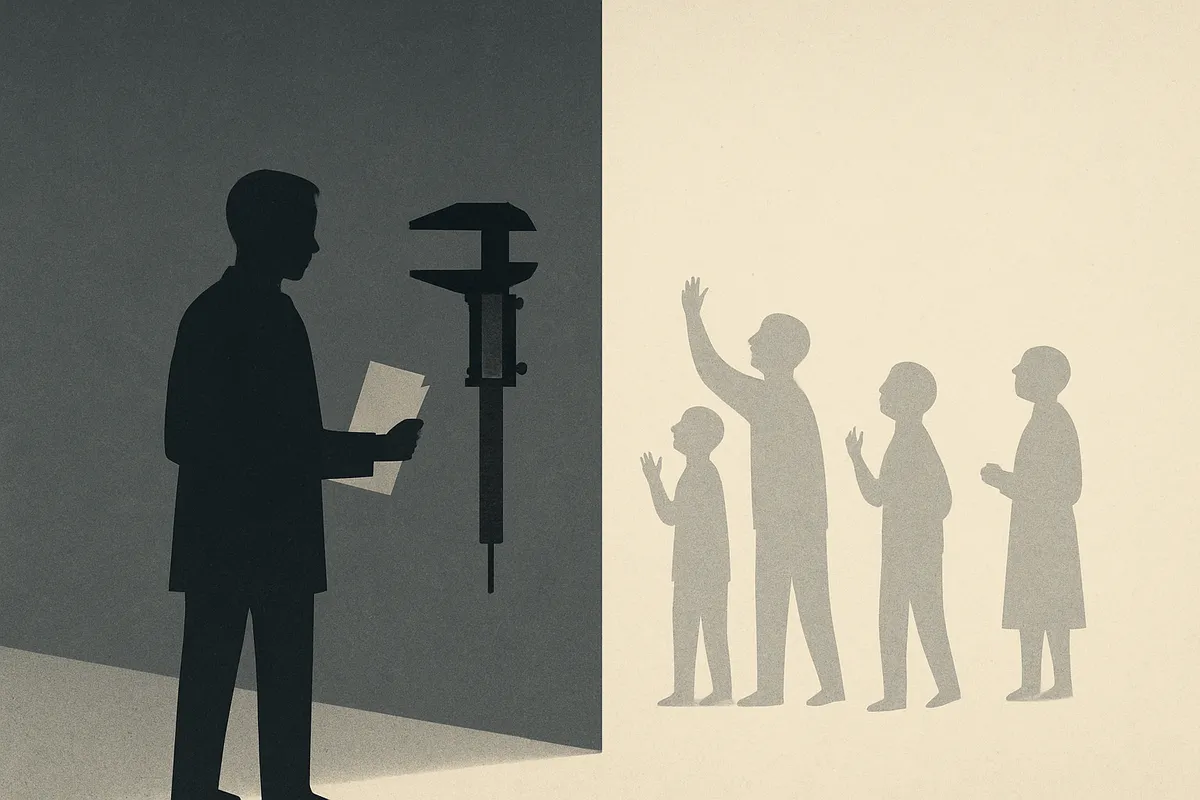Who defines the challenge in autism research?
 When UNC announced its new Autism Research Center, the message was clear: researchers are taking aim at the greatest challenges in autism.
When UNC announced its new Autism Research Center, the message was clear: researchers are taking aim at the greatest challenges in autism.
Not autistic-led. Not community-centered. Not participatory. Just researchers. Taking aim.
That framing isn’t cosmetic. It’s epistemic. It reveals who the institution trusts to define challenge, interpret meaning and direct solutions. And when you trace that framing across UNC’s public autism research ecosystem, the pattern holds:
Expertise is concentrated. Interpretation is unexamined. Autistic presence is peripheral.
We reviewed the center’s advisory board, leadership listings, research priorities and recruitment materials. Here’s what we found:
What the site shows — and what it doesn’t
UNC’s Autism Research Center spans five schools and more than 90 researchers. Its public-facing materials prioritize:
- Early detection and biomarker research
- Behavioral and neurological interventions
- Standardized, scalable tools for diagnosis and treatment
What they don’t prioritize:
- Autistic co-authorship or shared governance
- Participatory research or design
- Critical reflection on intervention ethics or outcome definitions
- Reflexivity around measurement tools and norms
Instead, the public narrative presents autism as a scientific puzzle and autistic people as data sources. Participation is invited — but not in defining the questions.
Representation exists — but not in leadership
One UNC-affiliated researcher, Dr. Hannah Morton, publicly identifies as neurodivergent. Her work on mental health, bullying and intersectionality reflects principles of inclusion and dignity. That matters.
But Dr. Morton is not part of the Autism Research Center’s governance structure. She is not listed on its advisory board. Her work, though important, is not reflected in the center’s core framing.
Other inclusive efforts exist within UNC — like the TEACCH program and Dr. Brian Boyd’s equity-focused initiatives — but they operate in parallel. Not within the center. Not defining its direction.
What counts as a "challenge"
UNC says it wants to tackle autism’s greatest challenges. The ones it names:
- How early can we detect divergence?
- How precisely can we intervene?
- How closely can we tailor treatment to biology?
The ones it doesn’t:
- Who defines the problem?
- Who decides what success looks like?
- Why autistic self-report isn’t trusted in outcome design?
- How research may reproduce the very barriers it claims to solve?
That’s not just a gap. It’s a failure of interpretive rigor. A center cannot claim to understand autism if it does not examine the frameworks through which it studies us.
Inclusion isn’t enough — without epistemic accountability
Inclusion doesn’t mean letting us sign up for studies. It means letting us co-create what studies ask. It means defining outcomes with us — not around us.
Rigor doesn’t mean more data. It means better questions. It means challenging the assumptions that turn support into compliance and difference into disorder.
The UNC Autism Research Center shows few signs, in public, that it is doing that work.
This is not just about who is at the table. It’s about who wrote the agenda.
And when autistic people are almost completely excluded from authorship, what results isn’t just misrepresentation. It’s erasure by design.
We are not your preclinical targets
We are not your risk profiles We are not a variable in your pipeline to scalable intervention
We are thinkers. We are critics. We are interpreters of our own lives.
If UNC wants to understand autism, it might start by elevating the only person in its orbit who speaks from within it. Dr. Hannah Morton doesn’t just study autistic life — she lives it. And she can ask better questions than any neurotypical person on the center's executive committee.